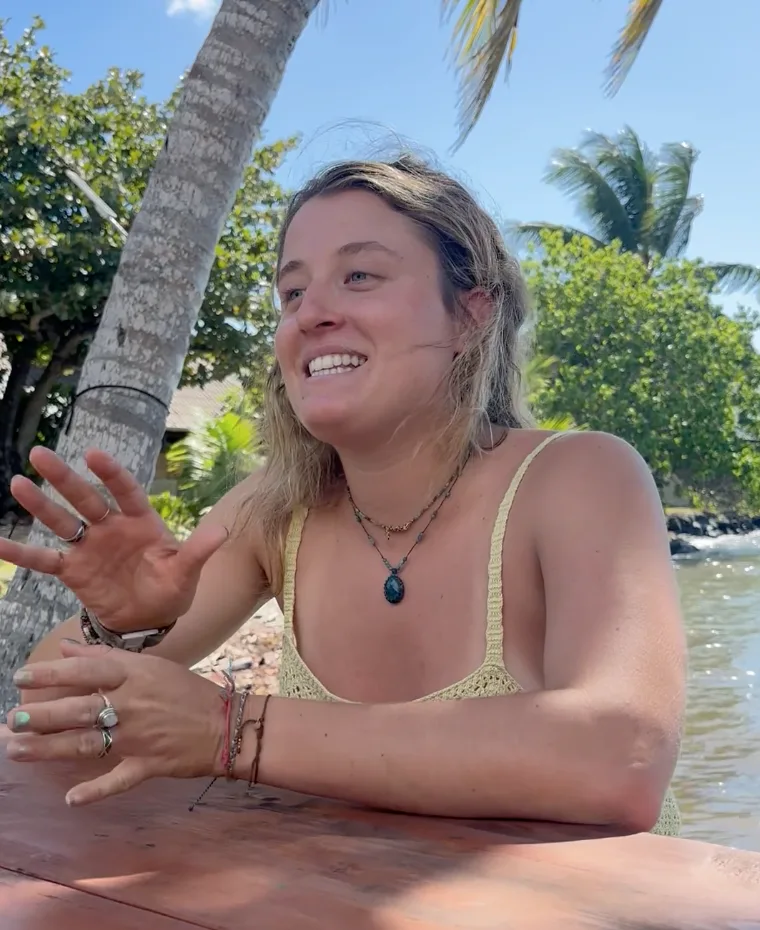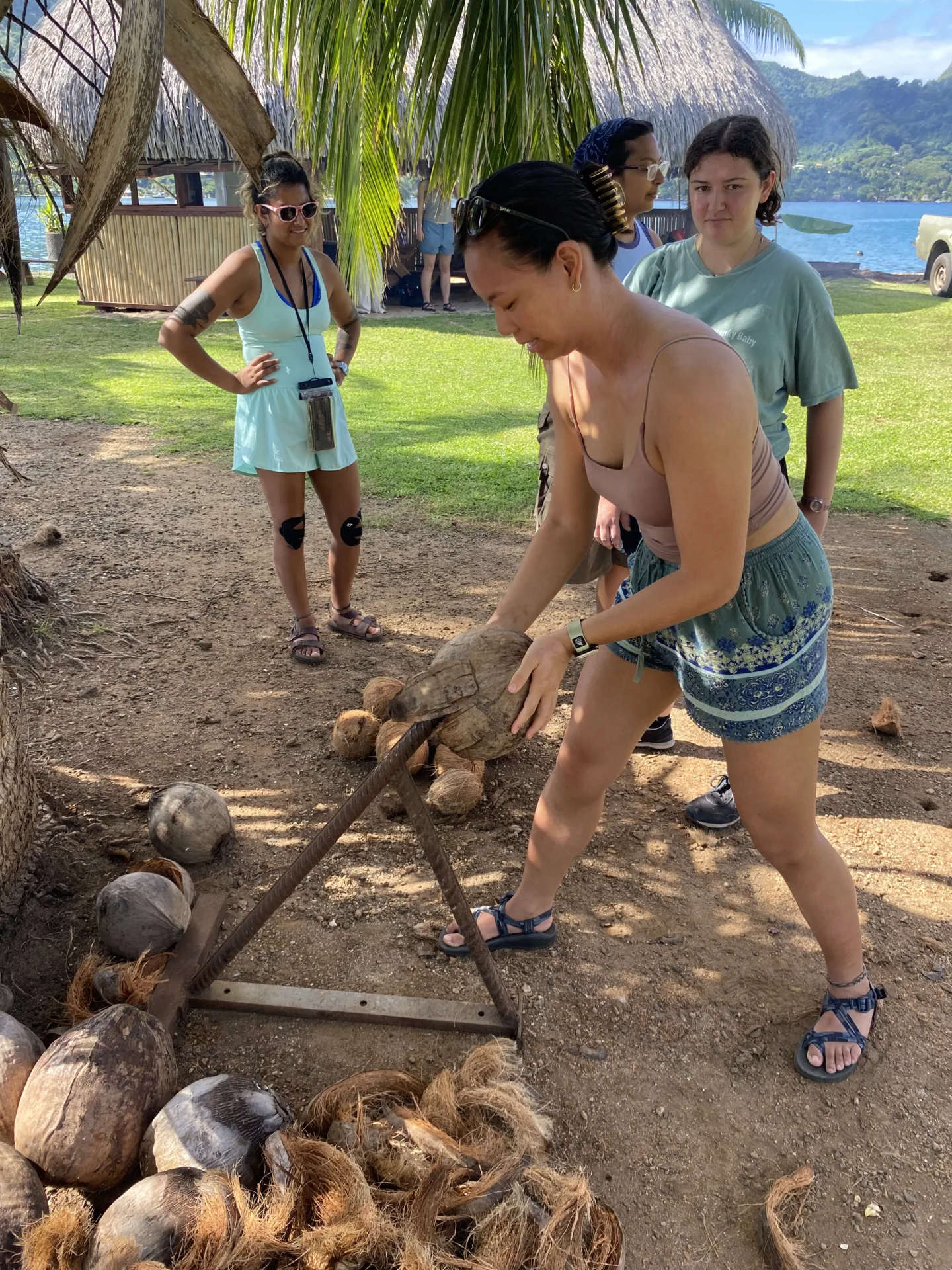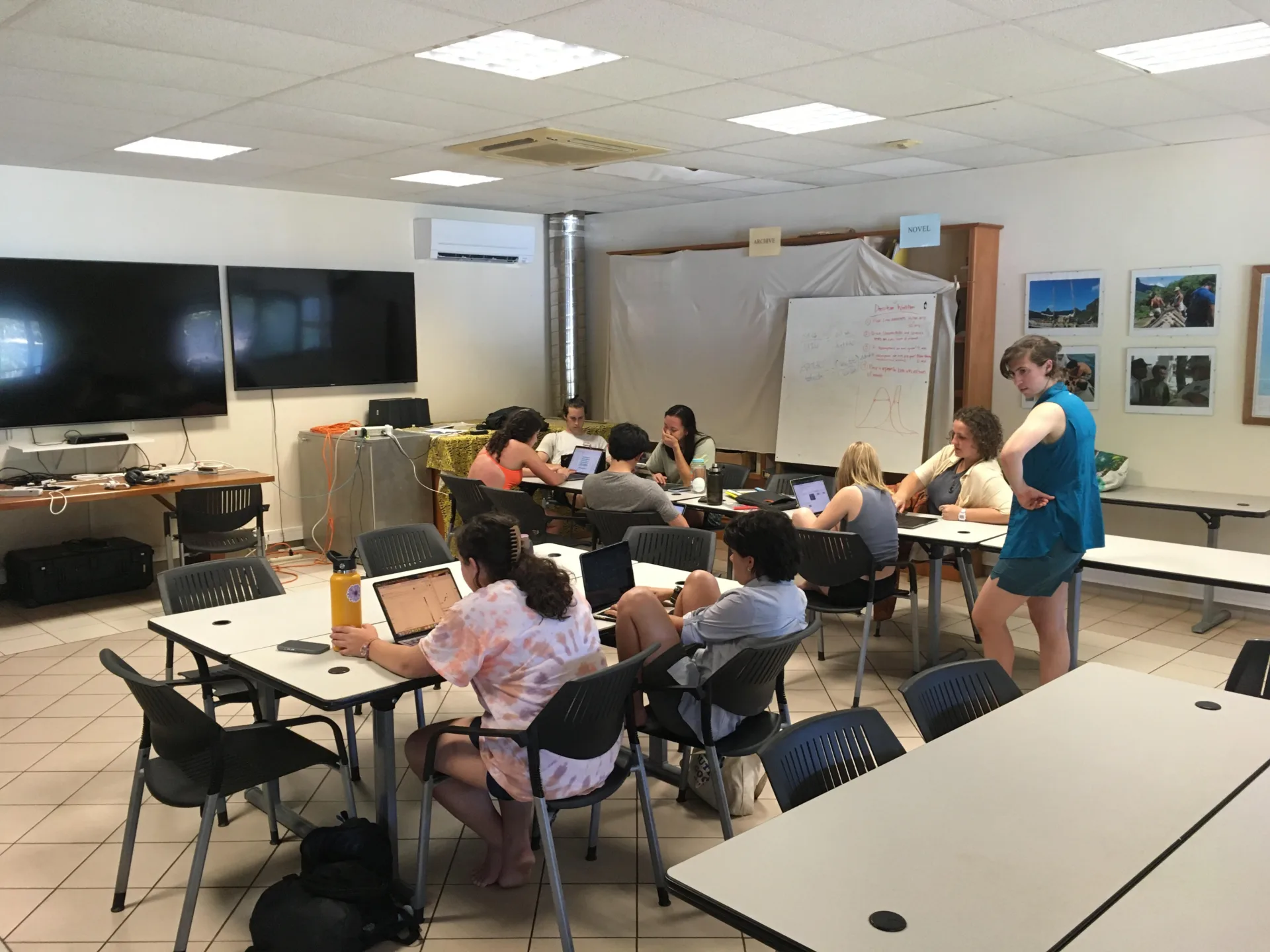Programs Blog
Ella on an Ahimā’a Dinner, the Sea as Home

Date: May 22, 2025
Time: 1630
Location: Gump Marine Station, Mo’orea
Weather: 85˚F, 10-15 kts easterly
This is an excerpt from an interview Ella Skonieczny, Eckerd College
Will you tell us about the ahimā’a dinner that the staff at Gump prepared for us a few days ago?
It was really special. We helped to prepare the food at that table over there (points over right shoulder), a traditional Tahitian meal. It really took all day, where we started the fire and helped prepare the food with local produce like coconuts and papaya. Meanwhile we had a dance lesson, traditional Tahitian dances. We all had a really fun time doing that and then we were quizzed! We had to do the dances for them! While the dinner was cooking, we also got to braid baskets that acted as platters for the food, which was a cool skill to learn. Putting the food together, the people together, even nature together, it was a really meaningful experience with a big group of people.
As you complete the first draft of your science project, compiling and analyzing all your data from the voyage, how is it going?
I’m in the copepods group. We’re currently having to pivot our project a little bit. We were looking at diurnal migration specifically, but not having as much data, we’re pivoting a bit more toward our proxy of chlorophyll-a and looking where on our cruise track we had abundance of chlorophyll-a and copepods at the same time. You can assume if there is more chlorophyll-a at the surface, there’s more phytoplankton, which mightmean there’s more copepods—for a variety of reasons.
The project has gone well, everyone’s been really comfortable with our very popular copepod ID! On the ship, within everyone’s lab rotation, they analyzed the plankton tows, counting copepods, which is part of our project. It became funny to be looking under the microscope while we’re in twenty-foot seas and we’re rolling around and you’re trying to hold on to a pole, while you’re also writing “copepod”! Or whatever else you find in the hundred-count. Or trying to find out which species of copepod you’re finding. Rolling around, we were always making jokes, “When we’re back on land, it’s going to be SO easy.”
World Oceans Day is coming up on June 8. How has your recent voyage influenced your understanding of the importance of the ocean?
I think this voyage has really just amplified my passion for the ocean, reaffirmed the passion and connection that I feel I have for the ocean. I really came into my own during our voyage across the Pacific and really found that this is my place and this is my home. I’ve know that for a while, coming to the water wherever I may be. Specifically any ocean. I kind of act like a magnet, and being on the water all the time really felt like, This is where I want to be. One really good example of that is that I would just stand on lookout—standing up on the bow by yourself for an hour, looking for ships or debris to report back to your mate (watch officer)—standing there, I could totally get lost in my thoughts. Thinking: This is the perfect place to be. I am so happy. I’m so grateful to be here. On the calmest of days, but even on the craziest of days, heeling over at such a degree, that water is coming across part of the deck, and you’re like This is crazy! This is so epic! The ocean holds so much power and so much mystery and so much love and is home to so many people and animals and really connects us to all of that. It’s something that we are all a part of, but something that I personally feel really, really connected to.


Recent Posts from the Ships
- Ocean Classroom 2024-A collaborative high school program with Proctor Academy
- Collaborations and Long-term Commitments: SEA’s Caribbean Reef Program Sets a Course for Coastal Programs that Compliment Shipboard Experiences.
- Sea Education Association students prepare for life underway using state of the art nautical simulation from Wartsila Corporation.
- SEA Writer 2022, Magazines From the Summer SEA Quest Students
- Technology@SEA: Upgrades Allow Insight into Ocean Depths
Programs
- Gap Year
- Ocean Exploration
- High School
- Science at SEA
- SEA Expedition
- SEAScape
- Pre-College
- Proctor Ocean Classroom
- Protecting the Phoenix Islands
- SPICE
- Stanford@SEA
- Undergraduate
- Climate and Society
- Climate Change and Coastal Resilience
- Coral Reef Conservation
- Marine Biodiversity and Conservation
- MBL
- Ocean Exploration: Plastics
- Ocean Policy: Marine Protected Areas
- Oceans and Climate
- Pacific Reef Expedition
- The Global Ocean: Hawai'i
- The Global Ocean: New Zealand